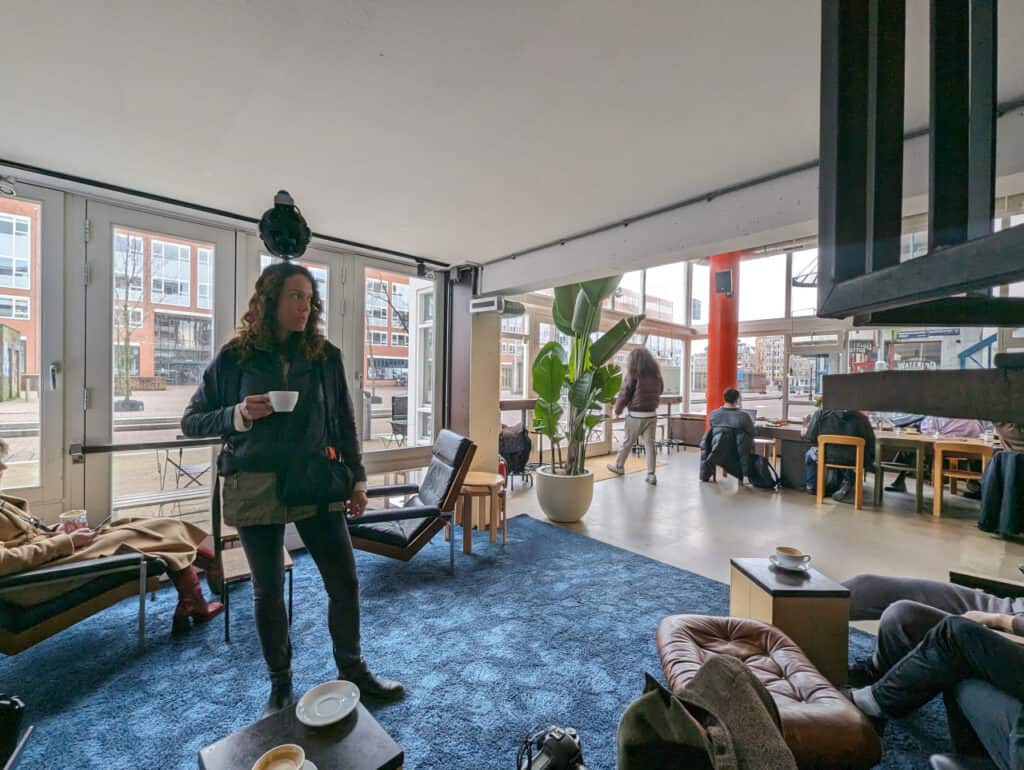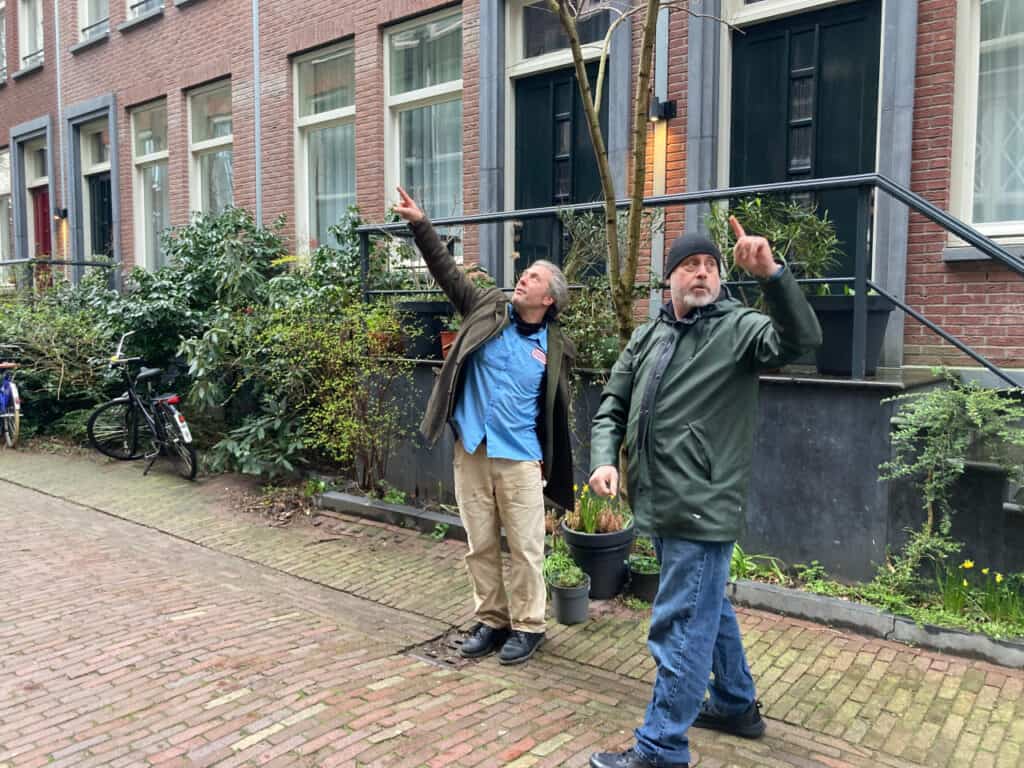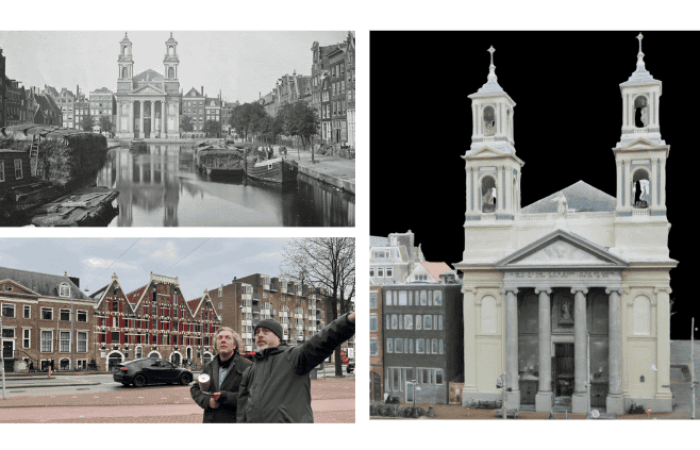The making of “The Ice Cream Man”: How a team of two and Mosaic’s cutting-edge scanning technology brought a WWII story to life
Introduction
Bringing historical accuracy to life on screen is a daunting task, especially when recreating events from the past. “The Ice Cream Man,” a short film set in Nazi-occupied Netherlands, faced this challenge head-on. Thanks to the innovative technology of Mosaic, the film achieved an unparalleled level of authenticity and visual storytelling. This case study explores how Mosaic’s advanced capture and processing techniques transformed the production of “The Ice Cream Man.”
Learn more about the making of the movie here on the Official Movie Page →
Background
“The Ice Cream Man” tells the story of Ernst Cahn, a Jewish ice cream parlor owner who faces persecution by Klaus Barbie, the infamous “Butcher of Lyon,” during the Nazi invasion of the Netherlands. As his world crumbles, Cahn must choose between resistance and death, with his choice echoing throughout the country. This film is based on true events and required meticulous attention to historical detail.

About Mosaic
Mosaic specializes in 360-degree HD mobile mapping cameras and LiDAR technology. Their cutting-edge solutions enable the capture of high-fidelity 3D imagery at scale, making them ideal for the VFX and animation industries. Their latest innovation, the Mosaic Xplor backpack camera, extends these capabilities to environments inaccessible by vehicle.

Project Overview
Goals:
The project aimed to recreate historical settings accurately and integrate seamless visual effects into the film. Authenticity was paramount, as was the efficiency and cost-effectiveness of the production process.
Key Stakeholders:
Writer/Director: Robert Moniot
VFX Supervisor: Todd Perry
Mosaic Team: Including CEO Jeffrey Martin, Director of Sales and Marketing Lynn Puzzo, and Ilia Shipachev, lead vision engineer.
Previous Challenges for VFX Artists
Capturing high-traffic and low-accessibility areas posed significant challenges. Mosaic’s technology overcame these hurdles, enabling detailed and efficient data collection without the need for extensive permits or street closures.
Traditional Recreation & Data Capture Methods
Moniot highlighted the difficulty of recreating historical locations using traditional methods.
“Recreating historical locations like 1941 Amsterdam required finding an exact match or building sets, both of which are difficult and costly. Traditional methods involved extensive redressing of modern locations or creating 3D models in software, which is labor-intensive and expensive.”
How Mosaic Did It Better
Mosaic’s advanced technology, including 360 cameras and LiDAR, allowed for accurate and efficient creation of 3D models of existing structures.
“Mosaic’s technology allows for a team of two to capture detailed surroundings and integrate them into scenes seamlessly.”
Strategy for Data Capture
To capture the necessary data for “The Ice Cream Man”, Mosaic utilized their Mosaic Xplor backpack camera. Here’s how they executed the strategy:
- Preparation: In early 2024, the film’s director, Robert Moniot, and VFX supervisor, Todd Perry, contacted Mosaic to capture locations in Amsterdam that were difficult to access or permit for traditional filming.

- Deployment: in late February 2024 Martin and Puzzo traveled to Amsterdam with the Mosaic Xplor and other essential equipment.
- Execution:
- Over a two-day period, the team captured Waterlooplein, a large square in Amsterdam. Puzzo walked the plaza back and forth multiple times, ensuring high-fidelity data capture, while Jeffrey Martin operated a drone to capture high-resolution images of the buildings from above.
- This location was captured in just over an hour.
- The team then proceeded to Prins Hendrikkade, capturing the necessary data in less than an hour by walking and flying the drone without disrupting traffic or requiring barriers.

- Processing: Back in their Prague office, Mosaic used their proprietary 3D modeling pipeline to create high-resolution, photo-realistic 3D mesh models from the captured data.

See the model created of the Waterlooplein Square here – >
Putting Data into Use
“The Ice Cream Man” VFX and film teams used the data in a variety of ways.
Previsualization and Shot Planning
Using the 3D textured mesh models of Waterlooplein delivered to the film’s VFX department, the team laid out crowd shots, ensuring accurate crowd density and shot framing. This planning was crucial for clear communication with the director and assistant director, especially since the VFX supervisor, Todd Perry, oversaw the shoot remotely using a camera feed and Zoom.

Recreating Historical Amsterdam
Combining scans from Waterlooplein and Prins Hendrikkade with RAW photos and drone footage, the team remodeled and retopologized buildings, including the Moses-Aaron church. They replaced modern buildings with historical facades, achieving a high level of detail and accuracy.


Final Rally Shots
The Waterlooplein and Prinz scans were used to create the final rally shot of protestors. The scan, in combination with the RAW photos and drone footage, was used as a baseline to remodel and retopologize that whole row of buildings along with the Moses-Aaron church.

The Prinz scan was used in a similar fashion, but Todd and the team took selected buildings from that scan and used them to replace modern buildings on the Waterlooplein. The more distant building facade could use the raw scan, while the closer buildings were finished using the scan as a template.

Tracking Shots
And…if Perry had been tracking shots, he states, “We could have used the scan to guide the tracking software to solve the camera. But, for this project, that wasn’t necessary.”
Testimonials from Directors & Filmmakers
Efficiency and Cost Savings
Mosaic’s advanced scanning technology significantly reduced the time and cost compared to traditional methods. “Working with Mosaic saved us so much time and money. I can’t even tell you,” said Moniot.
Professionalism and Expertise
“They’re all incredibly professional, the equipment and the technology is amazing and I highly recommend it,” Moniot added, highlighting the expertise and professionalism of the Mosaic team.
Versatility and Adaptability
The Mosaic Xplor’s smaller form factor allowed for easy maneuverability in tight spaces, while vehicle-mounted units captured large-scale environments quickly and efficiently.
Robert Moniot, the writer/director, emphasized the transformative impact of Mosaic’s technology on the production:
Ease of Use and Efficiency: “They made everything super, super easy. They explained everything. They gave us a real road map of how to get things done, and they delivered 100%.”
Revolutionary Technology: “It’s really hard work. And this is like, we just press a button, walk around for a while, and automatically boom, it’s done. It’s a brand new world.“
“Mosaic was able to scan a large space in a much faster timeline than traditional LIDAR or Photogrammetry. These were also areas with high foot traffic and low accessibility, so their system was able to scan despite less than ideal circumstances. The resulting models were key in both helping to design visual effects shots and provide a solid foundation for final model work. Three thumbs up.”
Todd Perry, VFX Supervisor
Learn more about how Mosaic Xplor, the portable 360° scanning backpack with high-resolution cameras and LiDAR, revolutionizing the VFX industry in the article by Todd Perry:
Conclusion
The collaboration between Mosaic and the production team of “The Ice Cream Man” resulted in a historically accurate and visually stunning film. Mosaic’s innovative technology not only enhanced the film’s authenticity but also streamlined the production process, setting a new standard for historical filmmaking. The success of this project underscores the importance of advanced VFX technology in bringing history to life on screen.
“The Ice Cream Man” is set to premiere at the Indy Shorts International Film Festival on July 25, 2024. Remarkably, the premiere is already sold out, marking the fastest sell-out in the festival’s history. This overwhelming response highlights the film’s anticipated impact and the excitement surrounding its historical narrative and cutting-edge visual effects.
The movie is an official selection and competing for Best Narrative Short. If it wins, it becomes an Oscar qualifying short film. This means that it will be on the shortlist for the nomination. Director Rob Moniot expresses high hopes for the film, and its potential – not only on the Red Carpet but also in its original intention – to offer viewers insight into a lesser-known story of World War II.
Stay tuned for more updates on the film’s success at the Indy Shorts International Film Festival and beyond!



